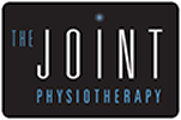What shoes should I buy?
Written by Tamar Simai, Senior Physiotherapist at The Joint Physio
A question I am frequently asked on an almost daily basis by my patients.
I want to preface this blog by saying that what you are about to read is purely my opinion based on my personal experience with my own feet, my patients feet and the time I have spent learning about feet. There are exceptions to what is below based on past injuries, genetics, relevant medical history, etc. Here we go…
Feet often get forgotten about and hidden away in socks inside shoes. They’re almost always overseen when it comes to exercise and in many cases, and I’ve seen many feet, neglected from a hygiene and self care perspective; out of sight out of mind. But they perform a vital function in our everyday locomotion that most of us tend to take for granted. They can carry our whole body weight and allow us to walk, run, jump, kick, balance, dance and feel. They are our single connection to the Earth.
There are 26 bones in the foot, more bones than any other part of the body. These bones are connected by 30 joints and those joints are moved and stabilised by around 100 muscles and ligaments. This is what allows for such complex movement and gait that as bipedal humans we rely so heavily on.
Joints in the foot are just the same as the joints in the rest of our body, they are made to move. Just the same as our muscles require load and exercise to strengthen and function. All these also contribute to 1 of the 3 elements that enable us to balance, what we call ‘proprioception’, our “awareness of our place in space.”
So ponder this, what happens to your joints and muscles when you spend years putting your feet in a shoe that is elevated off the floor, rigid, tight and not naturally shaped to the human foot?
Well, you get stiff, sore joints, weakened muscles, deformities such as bunions and reduced balance.
The question I often ask my patients is, “when are your feet most comfortable/least painful?”
The most common answer is “at home”.
My follow-up is then, “what do you have on your feet at home?”
To which they most often respond – “nothing.”
Somehow over the years we have become accustomed to the idea of needing to provide our feet with an excessive amount of support: shoes with arch support, shoes that are rigid, shoes with 2.5cm of padding (don’t get me started on Hokas), orthotics that create the shape our feet are supposedly meant to be in. However, some more food for thought:
If anyone ever gave you a wrist brace or thumb support or ankle brace and told you to wear it all the time for the rest of your life, would you walk away thinking, ‘oh yep sounds about right.’
No!
You’d want a timeframe and a rehab program to wean you out of it and strengthen the joint back to full function.
So why don’t we apply the same thinking to our feet with orthotics and shoes that are essentially braces for our feet?
As you can see, I am very passionate about this and could ramble on.
If you want to come and have a chat about your feet, shoes and the different types of shoes for different activities, please book in and I’d be more than happy to chat.
There is a shoe shop in Hampton called Sole Mechanics which I personally have found very beneficial to shop at. The information and assessment they provide using tools they have in store is very eye opening. If you’d like more information about what they do and to benefit from our discount code, book a time at The Joint to chat.
I’m hoping that if anything, you can walk away from reading this with food for thought that may make you look and think about your feet a little more often.

